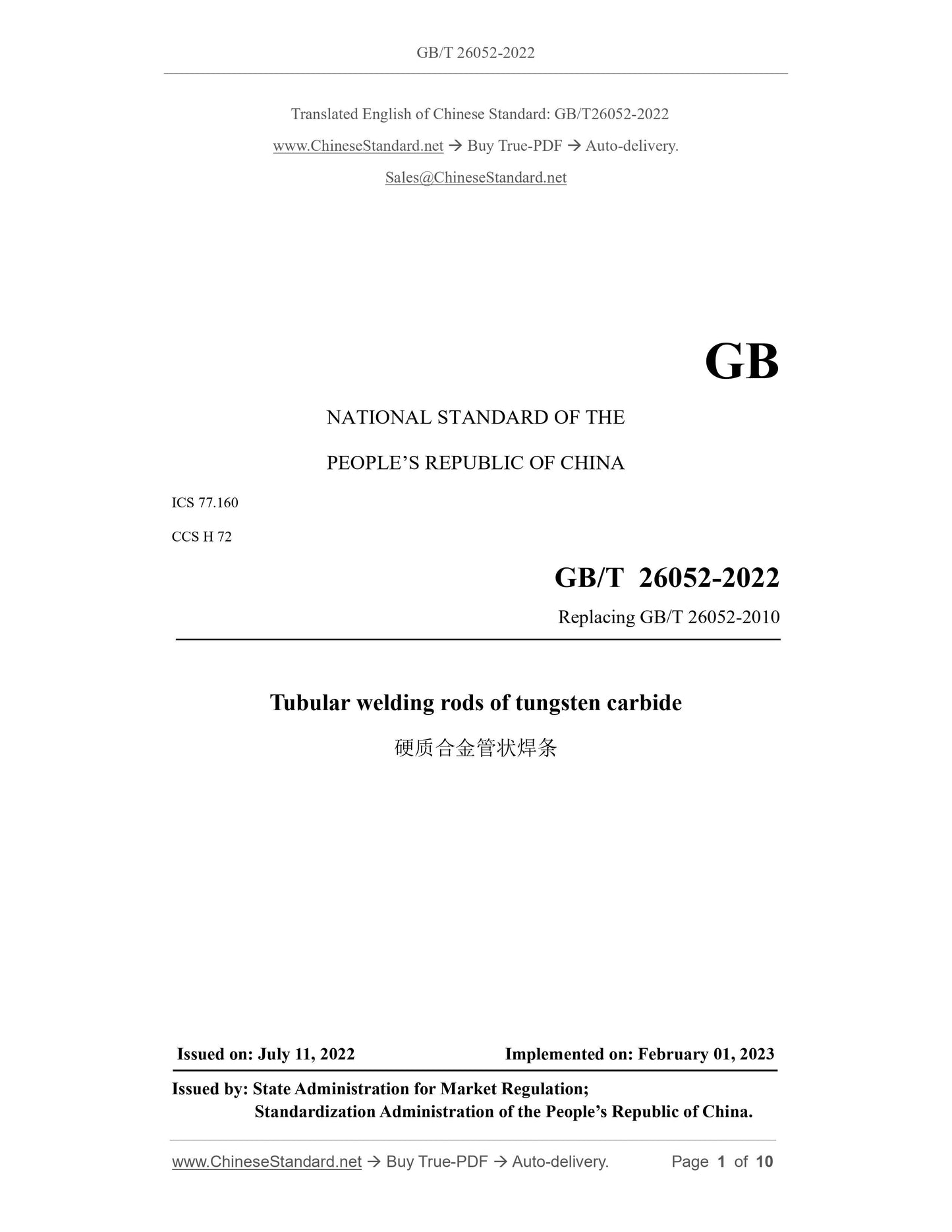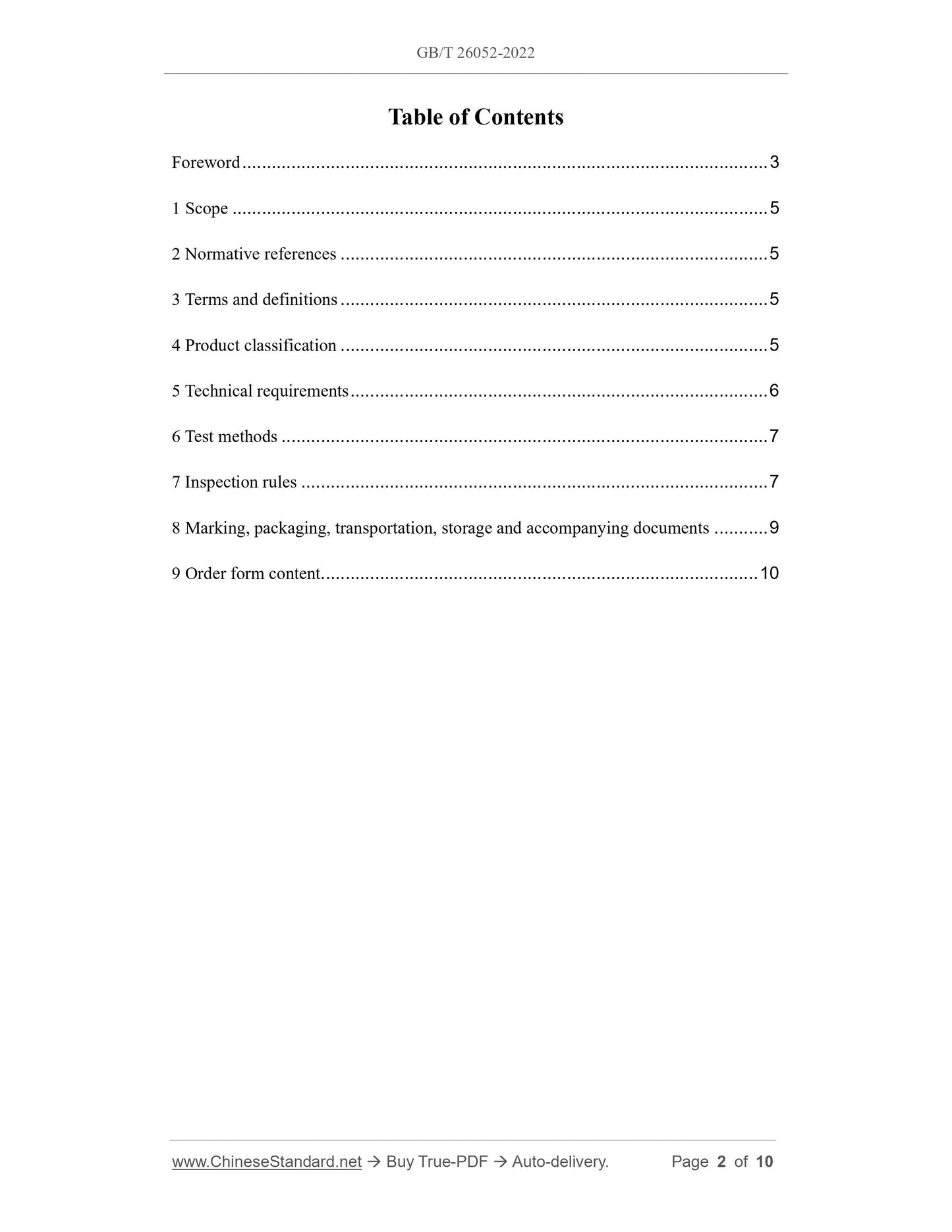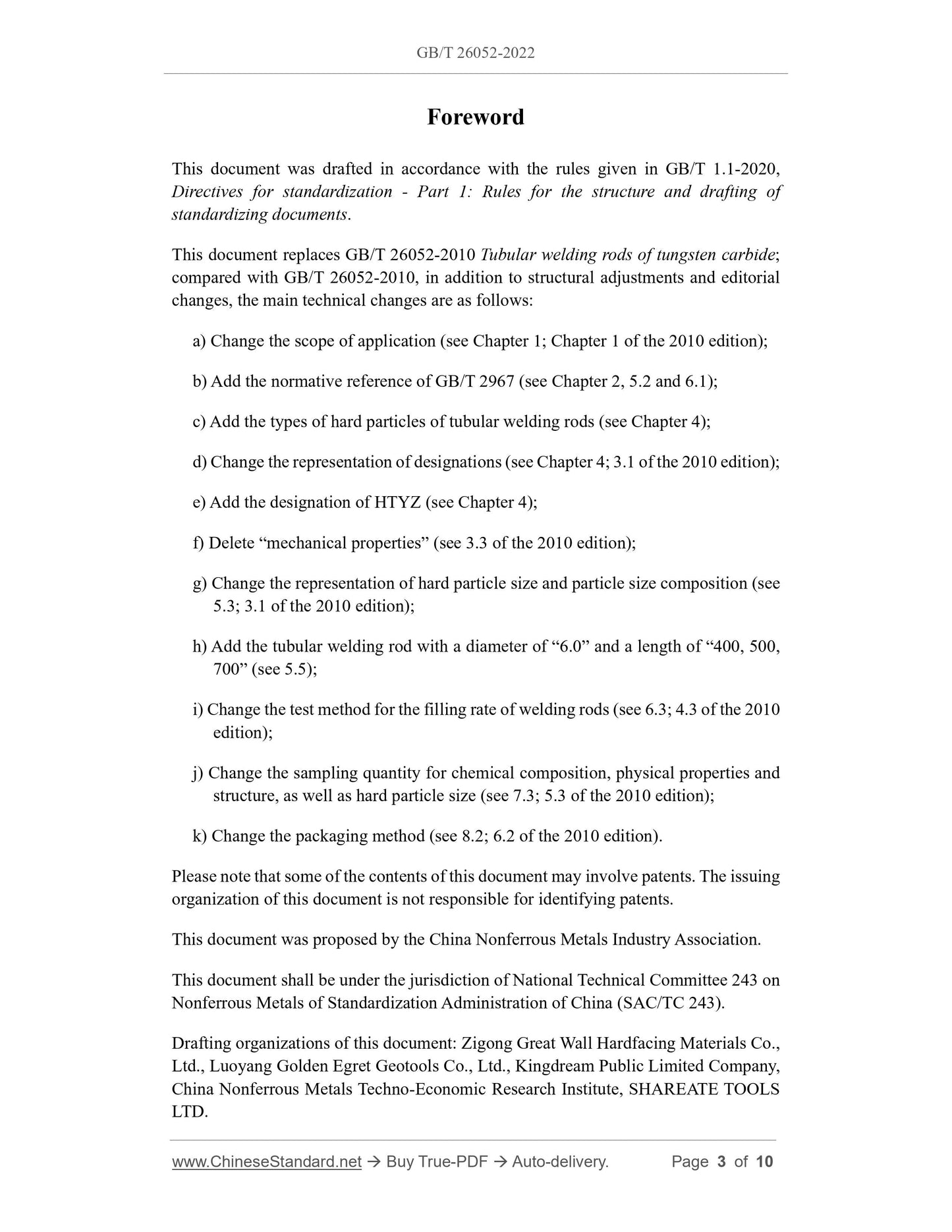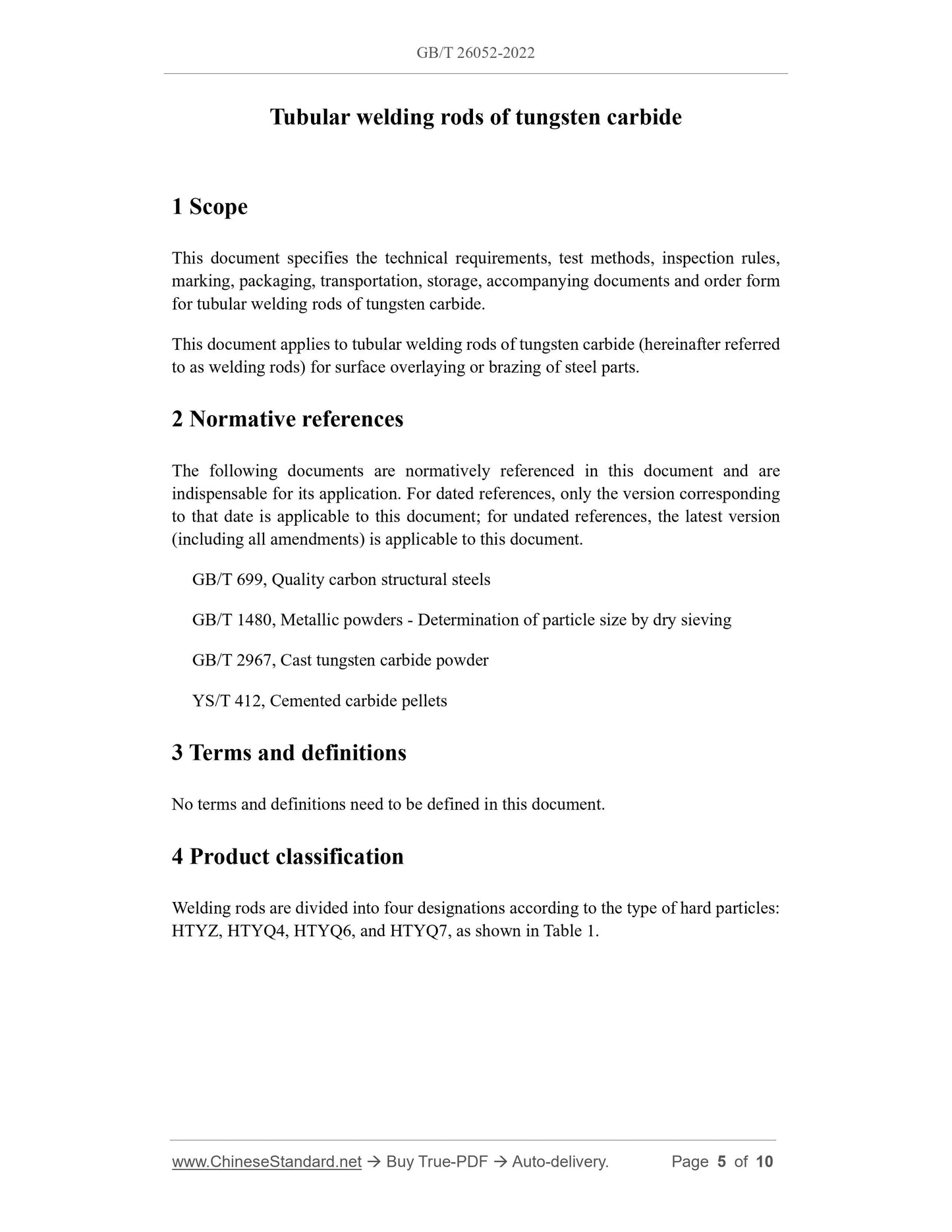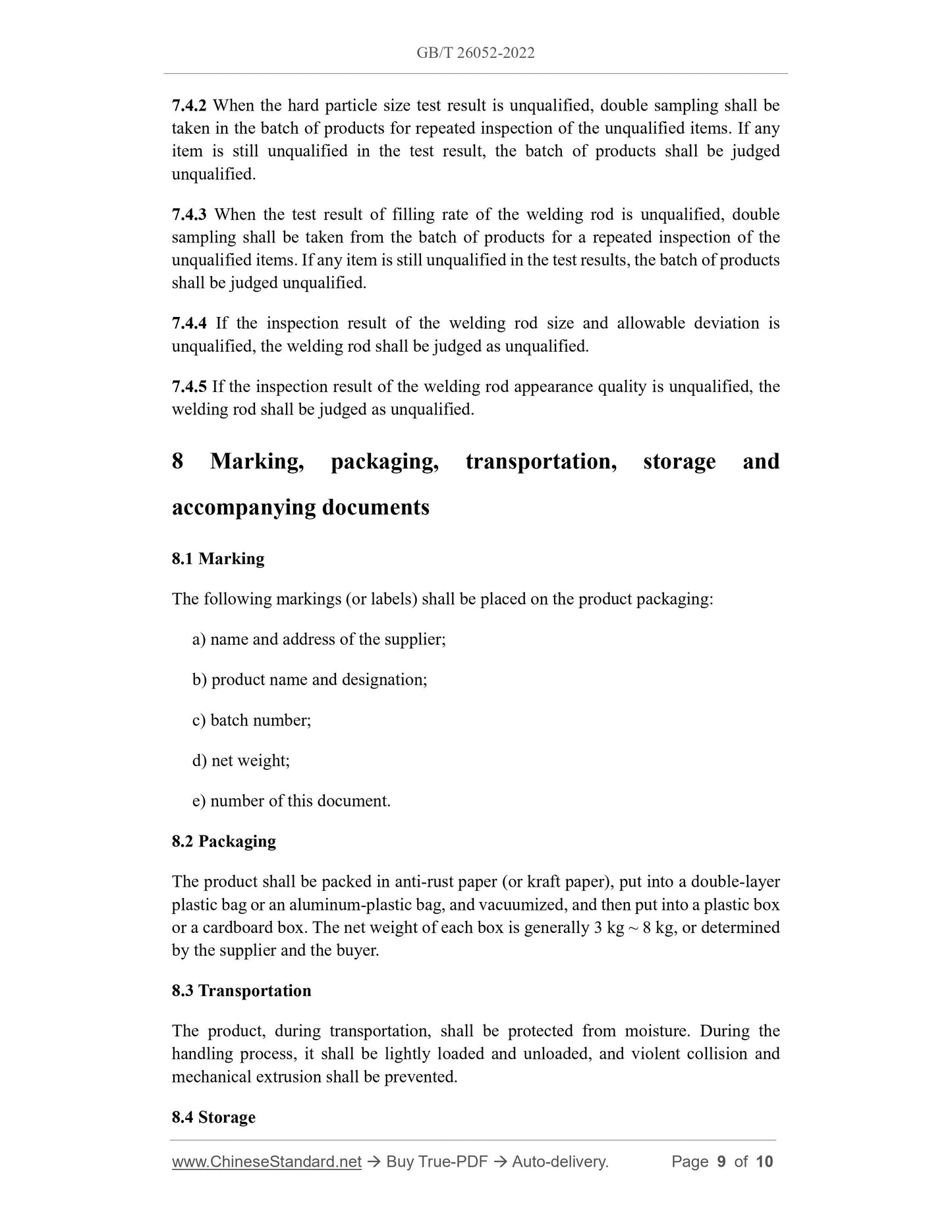1
/
of
5
www.ChineseStandard.us -- Field Test Asia Pte. Ltd.
GB/T 26052-2022 English PDF (GB/T26052-2022)
GB/T 26052-2022 English PDF (GB/T26052-2022)
Regular price
$185.00
Regular price
Sale price
$185.00
Unit price
/
per
Shipping calculated at checkout.
Couldn't load pickup availability
GB/T 26052-2022: Tubular welding rods of tungsten carbide
Delivery: 9 seconds. Download (and Email) true-PDF + Invoice.Get Quotation: Click GB/T 26052-2022 (Self-service in 1-minute)
Newer / historical versions: GB/T 26052-2022
Preview True-PDF
Scope
This document specifies the technical requirements, test methods, inspection rules,marking, packaging, transportation, storage, accompanying documents and order form
for tubular welding rods of tungsten carbide.
This document applies to tubular welding rods of tungsten carbide (hereinafter referred
to as welding rods) for surface overlaying or brazing of steel parts.
Basic Data
| Standard ID | GB/T 26052-2022 (GB/T26052-2022) |
| Description (Translated English) | Tubular welding rods of tungsten carbide |
| Sector / Industry | National Standard (Recommended) |
| Classification of Chinese Standard | H72 |
| Word Count Estimation | 8,871 |
| Issuing agency(ies) | State Administration for Market Regulation, China National Standardization Administration |
Share
